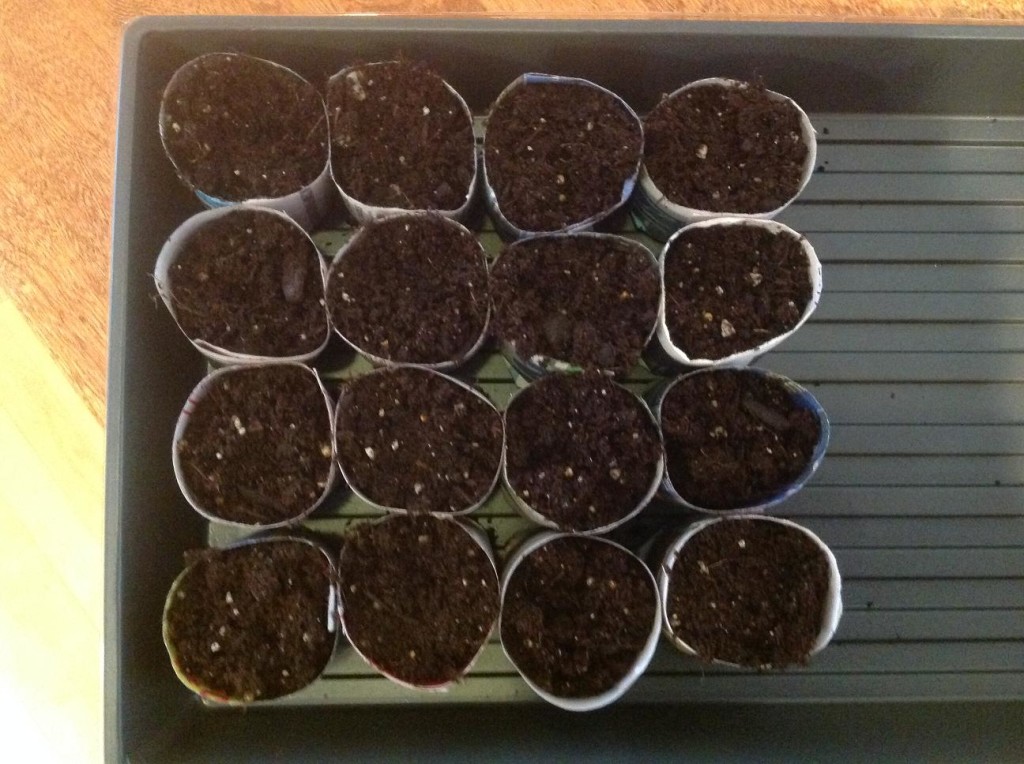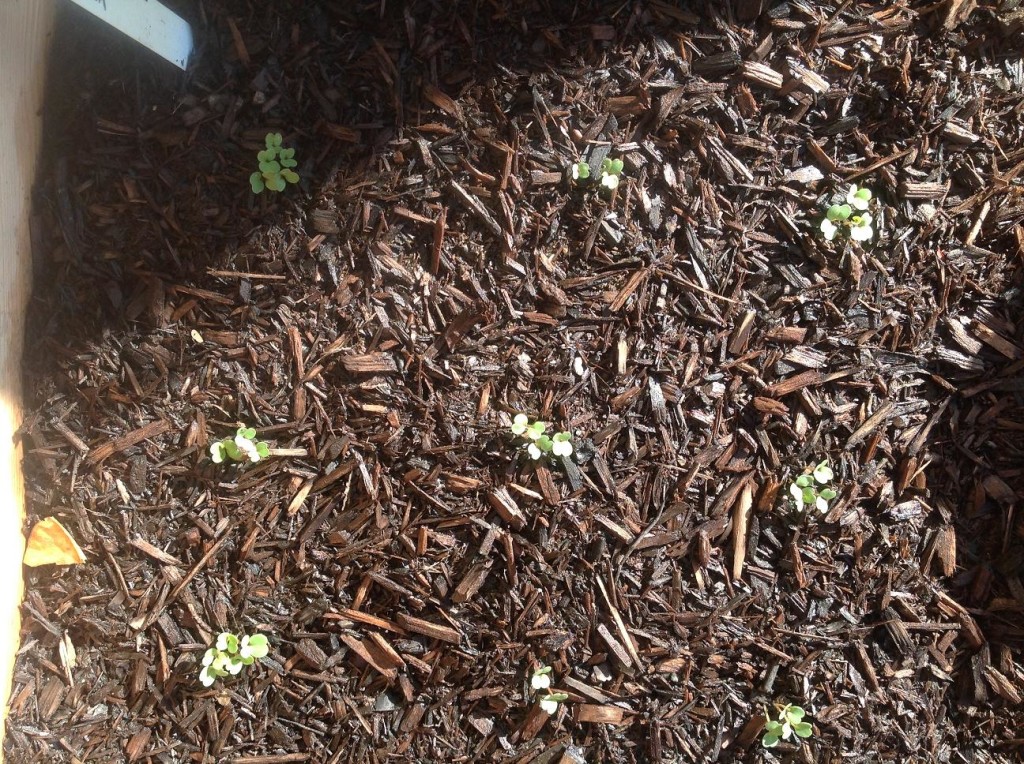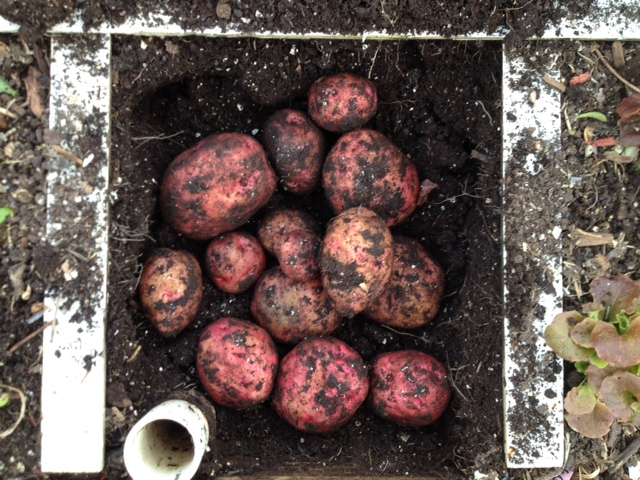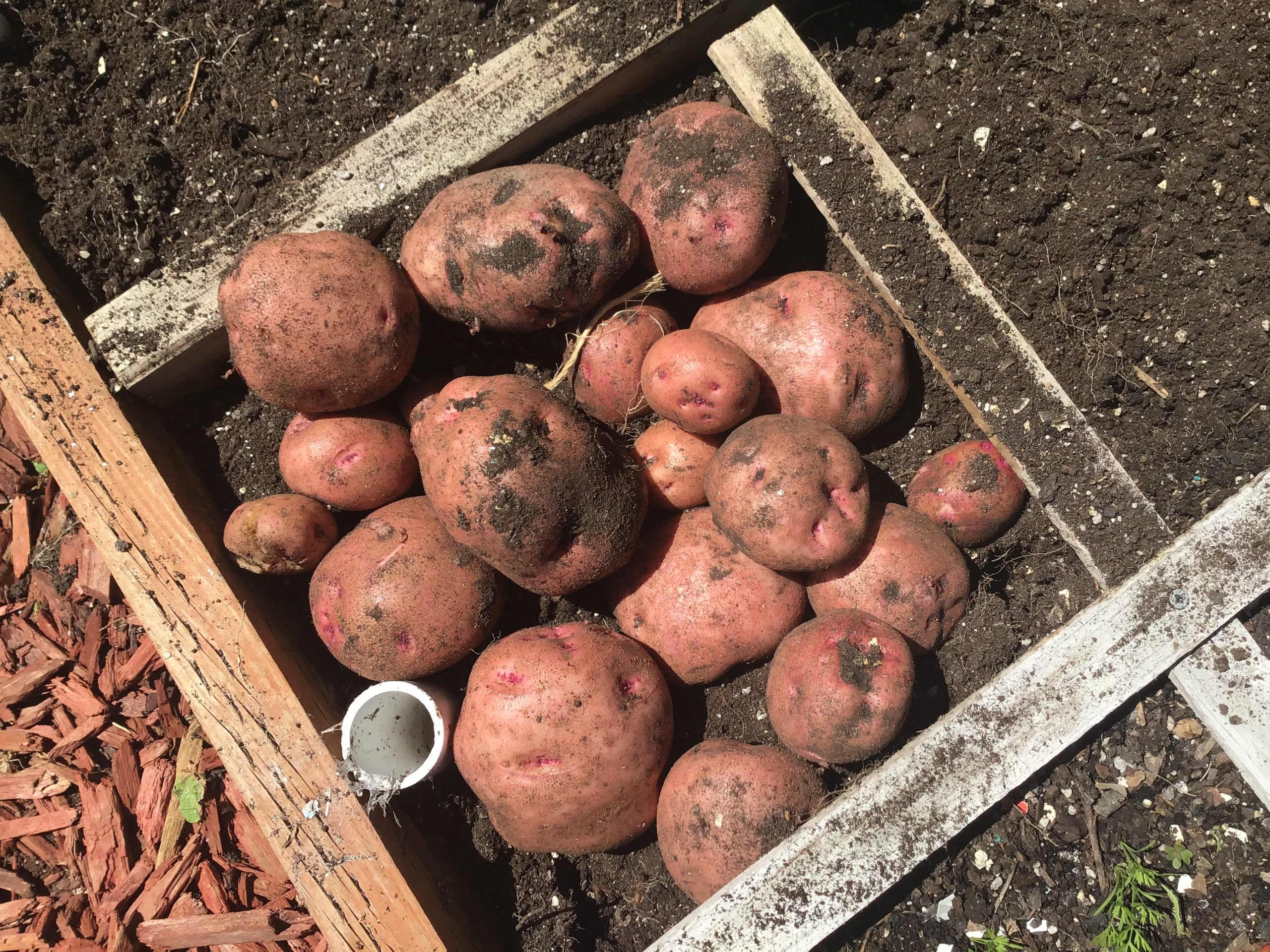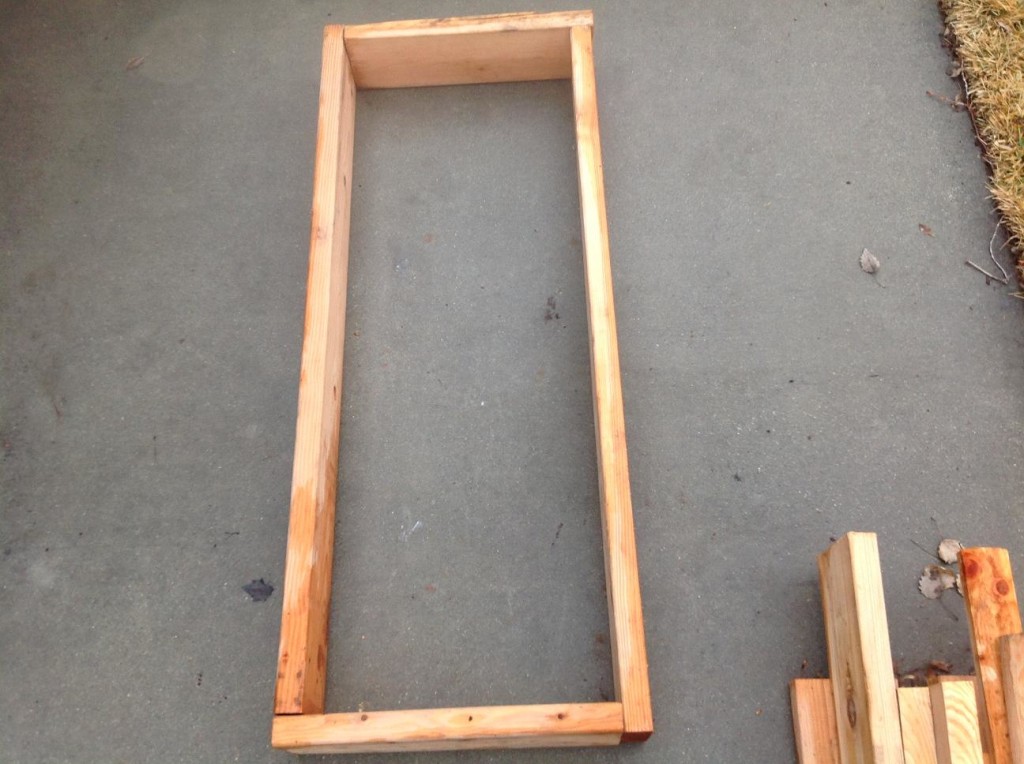 It can be any length you’d like but it shouldn’t be any wider than 4′. It can be shorter than that too-just like the picture. This is for our daughter and son-in-law. They don’t have a lot of room so this 2X4′ will fit perfectly for them. That’s only 8 squares of planting. We’ll be filling it with crops that love cold weather, are easy to grow, and that taste great(doesn’t it all?) Your box can be made out of wood, vinyl, bricks, ammo boxes(although they’re a little deep), railroad ties(the newer ones), etc. Screw them together with regular deck screws-at least 2 on each side and preferably 3. Be sure to rotate the corners as it shows in the picture. Try to make sure you put it in a place that gets a minimum of 6-8 hours of sun. And how deep does it have to be? Only 6 inches! That’s it! These are 2X6″ pieces of wood that I picked out of a trash bin near some new construction in the neighborhood. Free wood is the best! It takes about 10 minutes to drill this together. Next up: step 2-the perfect soil and my recommendations for commercially available compost. This is one of the biggest things to understand about the SFG system. If you get this wrong, all the other advantages of SFGing go away. It’s the biggest reason for failing in the SFG system.
It can be any length you’d like but it shouldn’t be any wider than 4′. It can be shorter than that too-just like the picture. This is for our daughter and son-in-law. They don’t have a lot of room so this 2X4′ will fit perfectly for them. That’s only 8 squares of planting. We’ll be filling it with crops that love cold weather, are easy to grow, and that taste great(doesn’t it all?) Your box can be made out of wood, vinyl, bricks, ammo boxes(although they’re a little deep), railroad ties(the newer ones), etc. Screw them together with regular deck screws-at least 2 on each side and preferably 3. Be sure to rotate the corners as it shows in the picture. Try to make sure you put it in a place that gets a minimum of 6-8 hours of sun. And how deep does it have to be? Only 6 inches! That’s it! These are 2X6″ pieces of wood that I picked out of a trash bin near some new construction in the neighborhood. Free wood is the best! It takes about 10 minutes to drill this together. Next up: step 2-the perfect soil and my recommendations for commercially available compost. This is one of the biggest things to understand about the SFG system. If you get this wrong, all the other advantages of SFGing go away. It’s the biggest reason for failing in the SFG system.
[ois skin=”below post”]
